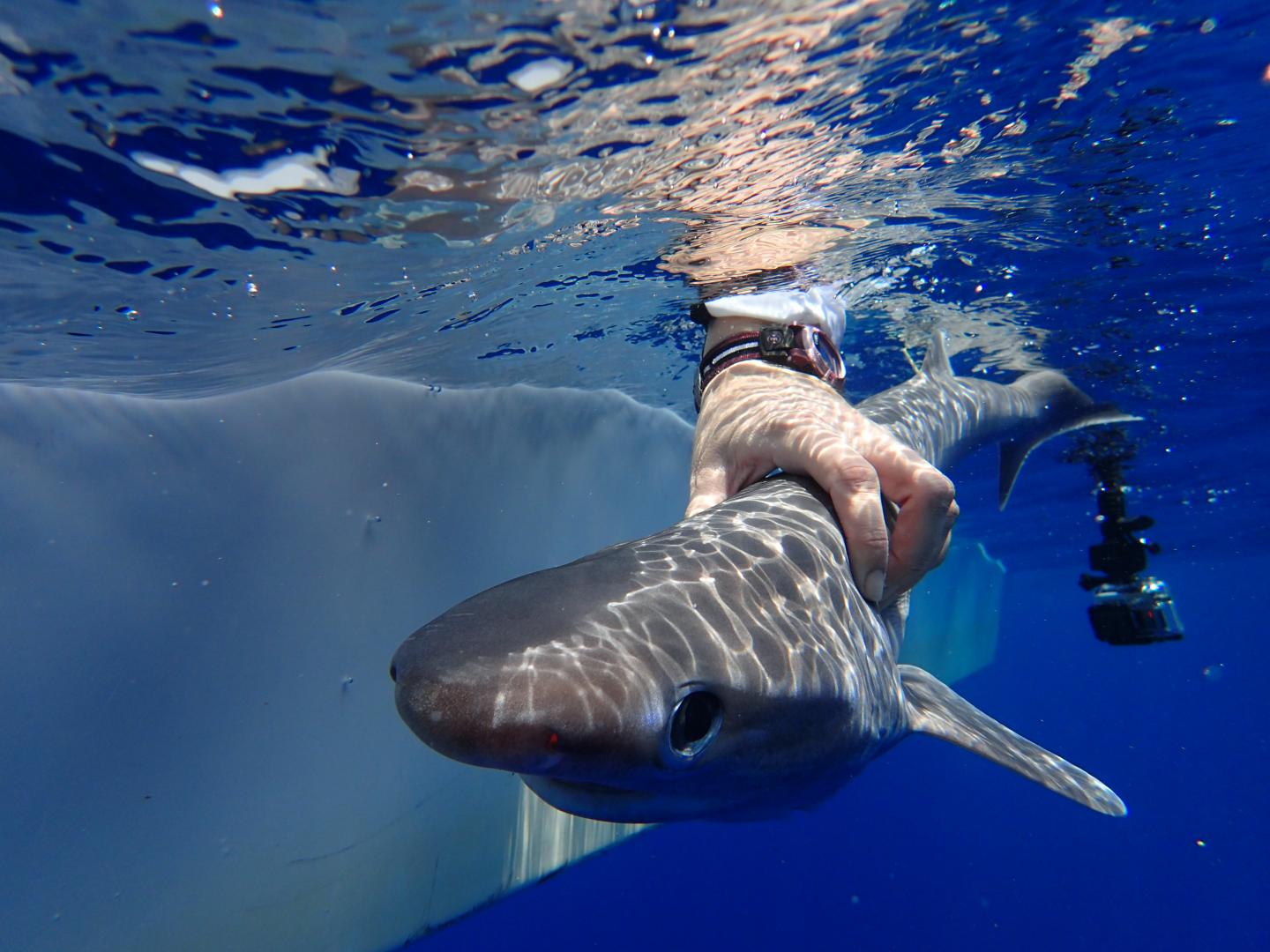'Resurrected' Shark Species Found Dwelling Deep in the Atlantic

Scientists have discovered a new species of shark cruising the Atlantic Ocean.
The Atlantic sixgill shark is a deep-sea dweller that gives birth to sweet-faced pups. It was long thought to be part of a global species of sixgill shark known as Hexanchus nakamurai, but new genetic evidence reveals that it's a separate species. Researchers have dubbed the newly discovered shark Hexanchus vitulus.
"We showed that the sixgills in the Atlantic are actually very different from the ones in the Indian and Pacific Oceans on a molecular level, to the point where it is obvious that they're a different species even though they look very similar to the naked eye," Toby Daly-Engel, a shark scientist at the Florida Institute of Technology, said in a statement.[On the Brink: A Gallery of Wild Sharks]
Sixgills are named for the six gill slits they have for breathing; most shark species have just five. The Atlantic sixgill grows up to 6 feet (1.8 meters) long, smaller than the 15-foot (4.5 m) sharks that make up H. nakamurai in the Indian and Pacific oceans. The largest sixgills, the bluntnose sixgill (Haxanchus griseus), can grow up to 26 feet (7.9 m) long.
The researchers compared mitochondrial genes of sixgills from the Atlantic with Indian and Pacific sixgills. The mitochondria are organelles in the cell that produce energy to fuel the cell's needs. Because the mitochondria are carried in the female's egg, outside the nucleus, they are passed on only from females to her offspring. The mitochondria have a separate set of genes from the nucleus of the cell, which is inherited from both parents.
The genetic results showed a clear grouping of sixgill sharks from Belize, the Bahamas and the Gulf of Mexico, which varied considerably from the sharks found near Japan, Madagascar and other Indo-Pacific locales. The researchers reported the findings on Jan. 14 in the journal Marine Biodiversity.
"Because we now know there are two unique species, we have a sense of the overall variation in populations of sixgills," Daly-Engel said. "We understand that if we overfish one of them, they will not replenish from elsewhere in the world."
Sign up for the Live Science daily newsletter now
Get the world’s most fascinating discoveries delivered straight to your inbox.
Original article on Live Science.

Stephanie Pappas is a contributing writer for Live Science, covering topics ranging from geoscience to archaeology to the human brain and behavior. She was previously a senior writer for Live Science but is now a freelancer based in Denver, Colorado, and regularly contributes to Scientific American and The Monitor, the monthly magazine of the American Psychological Association. Stephanie received a bachelor's degree in psychology from the University of South Carolina and a graduate certificate in science communication from the University of California, Santa Cruz.









